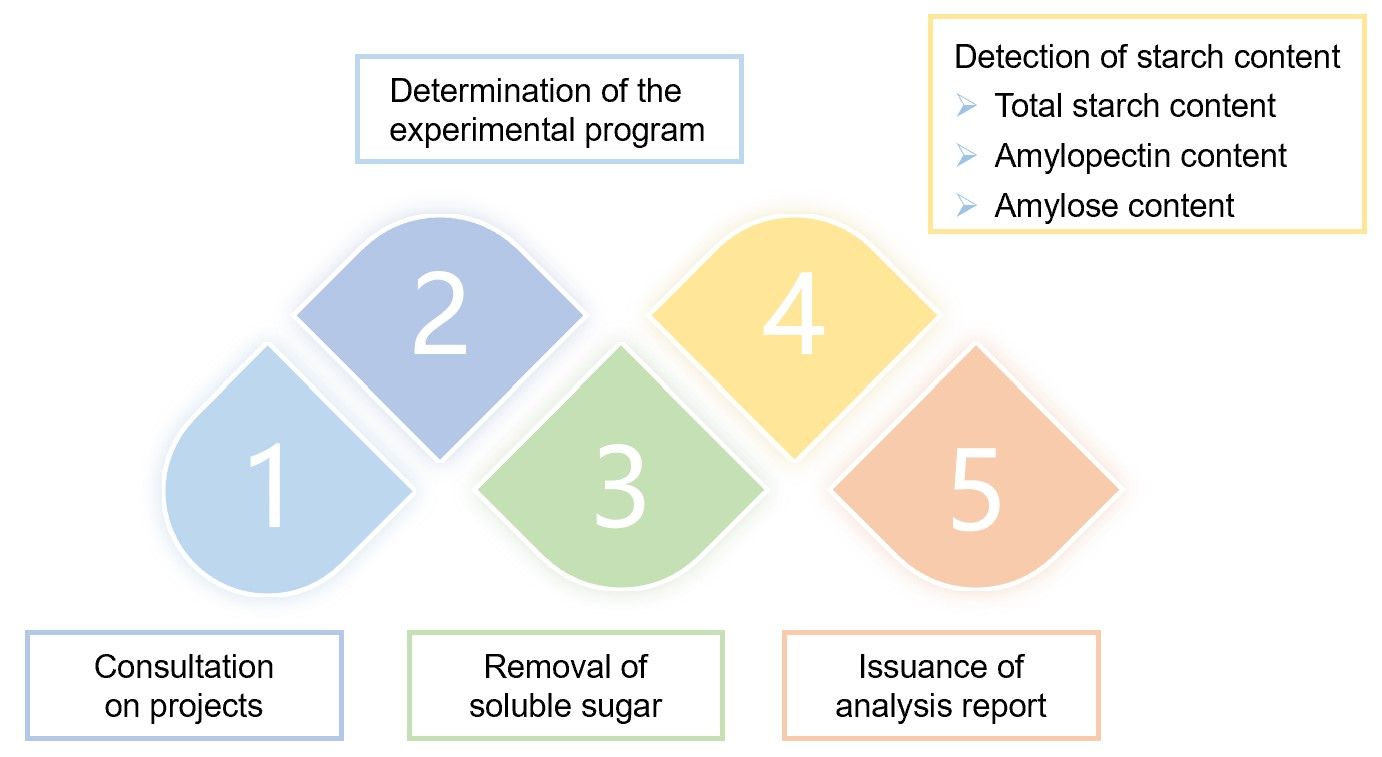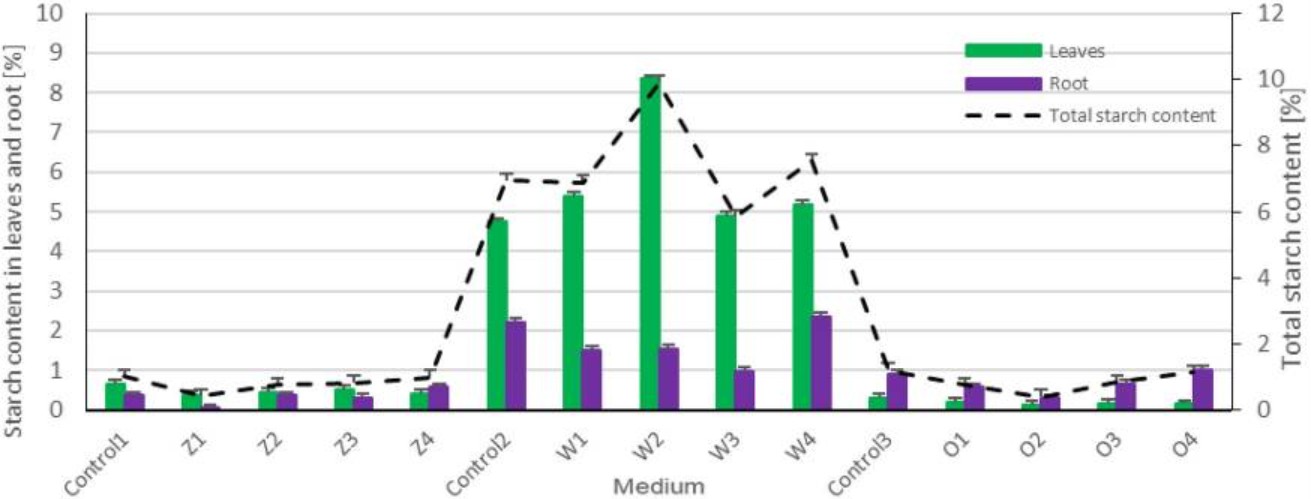Amylopectin and Amylose Profiling Service
Excellence in Starch Analysis to Explore Lignocellulosic Applications
Starch is found in a wide variety of plants and primarily serves as a storage for sugar. As a valuable energy source, starch (amylose and amylopectin) analysis is often used to assess the suitability of Lignocellulosic biomass feedstocks for bioenergy production. Creative Biolabs provides a high-quality starch analysis service to support our clients' research on various lignocellulosic pretreatment and conversion processes.
Currently, the starch production raw materials used for bioenergy production and biology include corn, wheat, etc. Knowing their starch content allows for the development of tailored treatment and conversion strategies. Our starch content analysis service applies to a wide range of lignocellulosic and other Biomasses, including corn, wheat, etc. Starch is a mixture of amylose and amylopectin. We test the total starch content, amylopectin content, and amylose content of various lignocellulosic samples according to client requirements.
Our goal is to provide convenient, fast, and accurate starch content analysis for various companies and researchers. After clarifying the client's analytical requirements, we develop a personalized starch content analysis plan. Lignocellulose and other biomasses contain a variety of water-soluble sugars. After removing the soluble sugars, we measure the starch content by enzymatic methods, etc., to obtain highly accurate and stable results. We are flexible in adjusting the analysis program in time during the experimental process and keep close contact with our clients. We deliver a detailed lab report after the analysis and provide technical support after the sale at any time.
 Fig.1 Flowchart of starch content analysis.
Fig.1 Flowchart of starch content analysis.
Advantages of Starch Content Analysis Service
-
Thoughtful service: Our starch content analysis service is thoughtful, providing pre-sale consultation and after-sale technical support.
-
Efficient project operation: Our technicians are experienced in starch content analysis. Based on a strict project management system, we efficiently complete the starch content testing of various samples.
-
Reliable results: We exclude the influence of soluble sugar in the testing process, which makes the results more reliable.
Starch content analysis is useful in evaluating various lignocellulosic treatments and conversion processes. Creative Biolabs provides a high-quality starch content analysis service with professional dedication. Our service applies to a wide range of lignocellulosic raw materials. Please feel free to contact us for more details and quotations on starch content analysis.
Published data
Today there is a growing demand for alternative energy sources. Starch content analysis is often used to assess the value of specific biomass for various specific purposes. In the present study, the effect of different treatments on starch content in Spirodela polyrrhiza was efficiently analyzed. The effect of salt stress on growth and development as well as the biomass value of S. polyrrhiza in bioethanol production and as a biofuel were finally assessed by examining the changes in starch content. The researchers found that plants increased starch production in response to salt stress, which opened up the possibility of S. polyrrhiza's use in bioethanol production and biofuels. Starch is a valuable source of energy. We can use starch content analysis, as in this study, to assess the value of various high-starch plants for application as alternative energy sources.
 Fig.2 Total starch content in leaves and roots grown under different culture conditions.1, 2
Fig.2 Total starch content in leaves and roots grown under different culture conditions.1, 2
FAQs
Q1: Why is it necessary to test starch content during biomass process studies?
A1: Starch is the best raw material for bioethanol production due to the relative simplicity of the conversion process. Therefore, the detection of starch content in biomass plays a crucial role in the pretreatment of biomass, the optimization of bioethanol production, and other bioconversion processes.
Q2: Is it necessary to pre-treat the sample before analyzing the starch content?
A2: Since the biomass sample contains some soluble sugars, it will affect the detection of total starch content. Therefore, it is necessary to remove these soluble sugars before analyzing the starch content. Clients can remove these soluble sugars by themselves. We also have a special program to remove the soluble sugar for sample processing.
Customer Review
Very Professional and Welcoming
"We needed to determine the best treatment by evaluating the effects of different treatment techniques on biomass components such as lignocellulose, so we often worked with Creative Biolabs. Their starch content analysis service was very good. Their service staff was very professional and enthusiastic, always suggesting the most appropriate treatment plan for our different types of samples. The starch analysis results were also very detailed, which helped us to reliably evaluate some treatments."
Efficient Starch Analysis
"We always preferred to work with Creative Biolabs because of the large volume of our samples. Their starch content analysis service was great. Even with a large number of samples, they got back to us in the quickest time possible and completed the project successfully. The final analytical results given to us also helped us effectively evaluate some biomass treatments."
References
-
Romanowska-Duda, Z., et al. "Valorization of Spirodela polyrrhiza biomass for the production of biofuels for distributed energy." Scientific Reports 13.1 (2023): 16533.
-
Under Open Access license CC BY 4.0, without modification.
For Research Use Only.
Related Services

 Fig.1 Flowchart of starch content analysis.
Fig.1 Flowchart of starch content analysis.
 Fig.2 Total starch content in leaves and roots grown under different culture conditions.1, 2
Fig.2 Total starch content in leaves and roots grown under different culture conditions.1, 2

